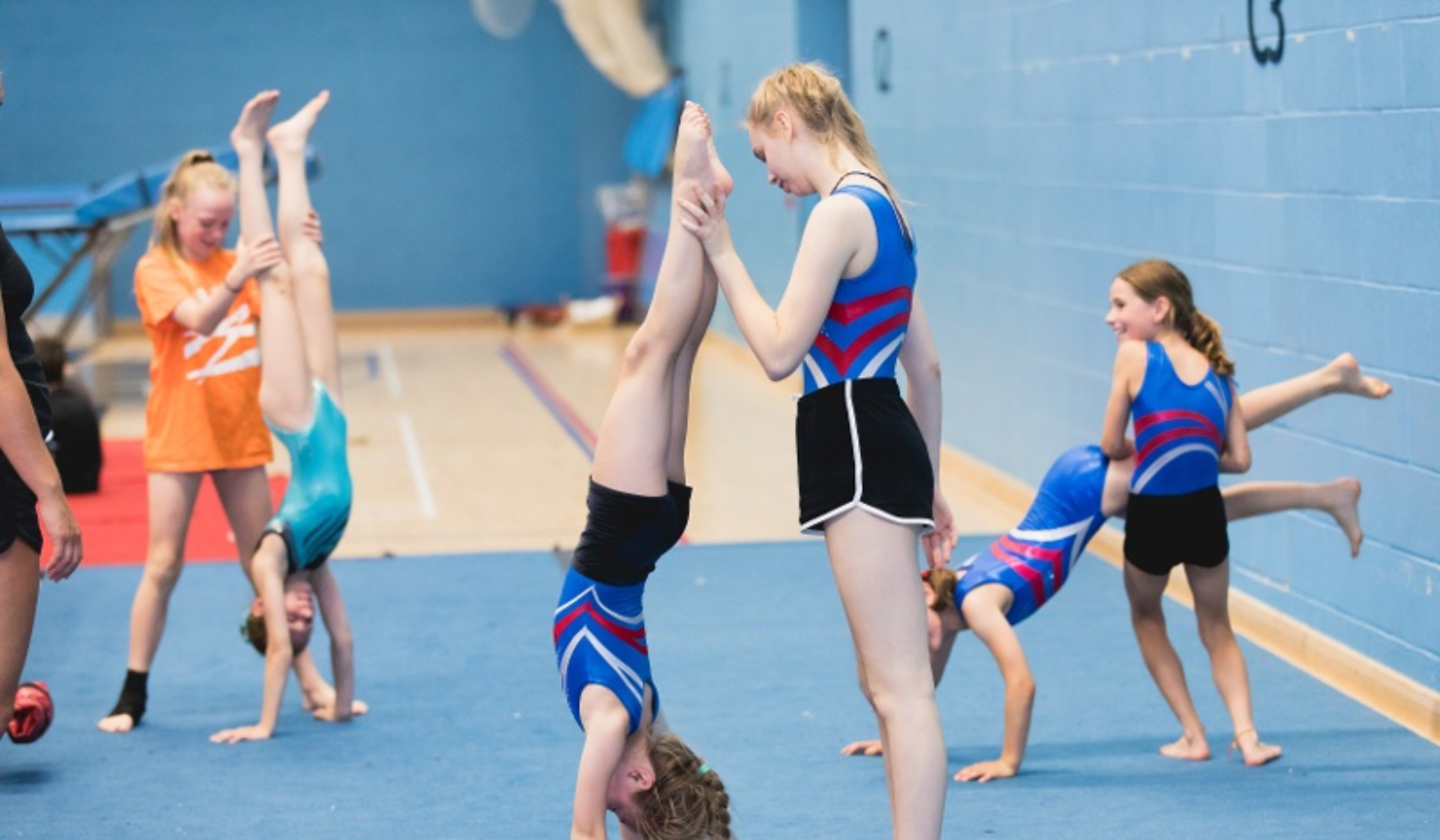Gymnastics for Kids and Adult

About Gymnastics for Kids and Adult
Gymnastics is a highly versatile sport that offers a wide range of benefits for both kids and adults, including improved strength, flexibility, coordination, balance, and agility. Whether practiced recreationally or competitively, gymnastics provides a fun and challenging way to enhance physical fitness and develop fundamental movement skills. Here are some gymnastics exercises suitable for kids and adults:
- Forward Rolls: Teach kids to tuck their chin and roll forward, starting from a standing position or from a squat. Progress to dive rolls or log rolls for more advanced variations.
Begin with handstand holds against a wall to build strength and confidence, then progress to cartwheels on both sides. Emphasize proper hand placement and leg form.
Guide kids to perform bridges by lying on their back with knees bent and hands by their ears, then lifting their hips toward the ceiling. Encourage them to push through their shoulders and engage their core.
Practice handstands against a wall or with a spotter for support. Focus on stacking the shoulders over the wrists and engaging the core to maintain balance.
Set up a low beam or use a line on the ground to practice balancing exercises like walking forwards, backwards, and sideways. Start with wide feet and progress to narrower stances as confidence increases.
Create a safe setup with mats or blocks for kids to practice jumping over obstacles of varying heights, focusing on proper take-off and landing technique.
Choreograph simple floor routines incorporating basic gymnastics skills like jumps, leaps, turns, and rolls. Encourage creativity and self-expression.
Handstand Progressions: Start with wall handstands to build shoulder and core strength, then progress to freestanding handstands. Work on handstand holds, handstand walks, and handstand push-ups for advanced variations.
Practice cartwheels on both sides, focusing on technique and control. Progress to one-handed cartwheels or aerial cartwheels for more advanced skills.
Begin with drills to develop the necessary strength and technique, such as handstand snap-downs and back handspring drills on a trampoline or with a spotter.
Work on swinging, supports, and dismounts on parallel bars to build upper body strength and coordination. Start with basic skills like dips and swings before progressing to more advanced elements.
Incorporate tumbling skills like round-offs, back handsprings, and aerials into floor routines. Focus on mastering proper technique and execution.
Practice balance beam skills on a low beam before progressing to a high beam. Work on series, turns, jumps, and dismounts while maintaining poise and control.
Develop upper body and core strength with exercises on gymnastics rings, such as dips, pull-ups, muscle-ups, and levers. Use assistance or progressions as needed to gradually increase difficulty.
Whether participating in gymnastics for recreation, fitness, or competition, it’s important to prioritize safety, proper technique, and gradual progression of skills. Start with foundational movements and gradually advance to more complex skills as strength, flexibility, and proficiency improve. Consider enrolling in gymnastics classes or seeking guidance from qualified coaches or instructors to ensure safe and effective training.
Performances
Contact Us
- 21/1, Kellys Road, Kilpauk, Chennai - 600010, Tamil Nadu, INDIA
- +91 95667 88054
- alignpeakphysio@gmail.com
